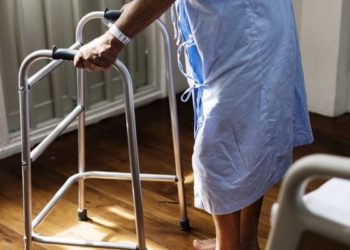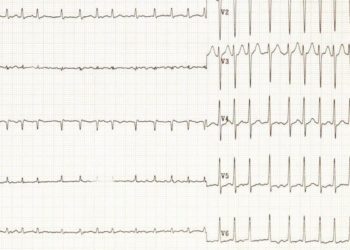Characteristics of COVID-19 pneumonia patients [Classics Series]
This study summary is an excerpt from the book 2 Minute Medicine’s The Classics in Medicine: Summaries of the Landmark Trials
1. This case series found that the majority of patients with novel coronavirus–infected pneumonia (NCIP) were infected through hospital transmission (41%).
2. The majority of patients were admitted to isolation wards (73.9%) and the remainder to intensive care units (26.1%).
Original Date of Publication: February 2020
Study Rundown: This retrospective case series analyzed the characteristics of NCIP patients hospitalized in Wuhan, China. The most common presenting symptoms were fever, fatigue, and dry cough. Approximately one-fourth of patients had to be admitted to the intensive care unit, predominantly for respiratory distress syndrome. Hospital transmission was the primary method of contracting NCIP. Notably, viral load was not measured but may contribute to disease severity. Additionally, categorization of hospital-related transmission was based on contacts and proximity to infected individuals. It may have been overestimated, particularly in healthcare workers who were all presumed to have contracted NCIP in-hospital. In summary, the case series suggests that NCIP patients in Wuhan were most likely to become infected in-hospital and were primarily admitted to the intensive care unit for respiratory distress syndrome.
Click to read the study in JAMA
In-Depth [retrospective case-series]: This case series involved retrospective analysis of NCIP progression in hospitalized patients (n = 138). The median age of participants was 56 years, and approximately half were men (54.3%). The majority of patients remained in isolation wards (73.9%) although some were moved to the intensive care unit due to decompensation (26.1%). Patients who were admitted to the intensive care unit were significantly older (median age 66 years versus 51 years; p < 0.001). Almost half of patients had underlying comorbidities (46.4%) including hypertension (31.2%), cardiovascular disease (14.5%), and diabetes (10.1%). Patients most commonly presented with fever (98.6%), fatigue (69.6%), and an unproductive cough (59.4%). In terms of treatment, antiviral therapy was preferred (89.9%) followed by moxifloxacin antibacterial therapy (64.4%).
Wang D, Hu B, Hu C, Zhu F, Liu X, Zhang J, et al. Clinical Characteristics of 138 Hospitalized Patients With 2019 Novel Coronavirus–Infected Pneumonia in Wuhan, China. JAMA. 2020 Mar 17;323(11):1061–9.
©2022 2 Minute Medicine, Inc. All rights reserved. No works may be reproduced without expressed written consent from 2 Minute Medicine, Inc. Inquire about licensing here. No article should be construed as medical advice and is not intended as such by the authors or by 2 Minute Medicine, Inc.







![The ABCD2 score: Risk of stroke after Transient Ischemic Attack (TIA) [Classics Series]](https://www.2minutemedicine.com/wp-content/uploads/2013/05/web-cover-classics-with-logo-medicine-BW-small-jpg-75x75.jpg)